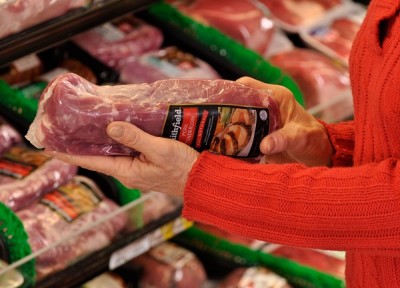|
Listen To The Article
|
 New federal requirements for meat labeling have raised not only consumer awareness about food origins but also the chance for spiked grocery prices.
New federal requirements for meat labeling have raised not only consumer awareness about food origins but also the chance for spiked grocery prices.
The country-of-origin labeling rule (COOL) requires certain food products, particularly most beef and poultry, to include specific information about the product’s country of origins.
“Proponents of COOL say that consumers have a right to know where their fresh meat originates,” Food Safety News said, noting that food companies previously only had to list the countries through which the meat passed.
Federal food labeling standards were approved in 2002 due to the fear of mad-cow disease from imported meat. But these regulations were not applied to meat until 2008, when meat packages were required to possess certain labels noting the meat’s country of origin.
The labeling rule was updated in May to include more detailed information about a product’s origins, although grocers were given until end of November to make the transition.
According to the Agricultural Marketing Service, COOL now requires that meat packages, among other select food items, list where animals are born, raised and slaughtered. The updated labeling rule applies to animal products such as beef, lamb, pork, goat and chicken, as well as fish and shellfish. Other food items, including peanuts, pecans and ginseng, also will be required to adhere to the labeling rule.
The United States Department of Agriculture said the goal of COOL is to help consumers better understand where their food originated. But some food producers oppose the new rule, as COOL could add millions of dollars in production expenses – and, as a result, increase prices for certain food items.
“Included in those costs will be the elimination of commingling – the farming of livestock from different countries, which created efficiencies for meatpackers,” The Los Angeles Times reported. “Livestock will now have to be separated according to origin, which will require new infrastructure for the meat industry.”
The meat industry also has complained that the labeling rule may encourage consumers to gravitate toward meat solely produced in the U.S., as both Canada and Mexico already have seen a decline in meat sales in the U.S. As a result, some companies have filed a lawsuit against the USDA and Agricultural Marketing Service in efforts to repeal this rule.
However, COOL does not require strict labeling procedures for all types of meat, providing some relief for the meat industry. Labels for ground meat, for instance, are not required by law to list the countries in which the product remained for less than 60 days, although it still must list the other countries.
Processed meats, such as hot dogs, also are not required to adhere to COOL standards. Imported processed meat must continue listing the country of origin on the label, the USDA noted, but these items do not need to provide additional information about the animals’ living and processing locations.
In addition, the updated labeling law allows grocers to continue using older, less specific labels on food packages as long as proper signage near the product provides a more detailed list of the country of origin information.
“Food products, both imported and domestic, must meet the food safety standards of USDA’s Food Safety and Inspection Service and the U.S. Food and Drug Administration,” USDA officials added. “Food safety and traceability are not the stated intent of the rule, and the COOL program does not replace any other established regulatory programs that related to food safety or traceability.”
The USDA listed on its website examples of the meat products that must follow the new guidelines:
- Muscle cuts of beef (including veal), lamb, pork, goat, and chicken;
- Ground beef, ground lamb, ground pork, ground goat, and ground chicken;
- Farm raised fish and shellfish;
- Wild fish and shellfish;
- Perishable agricultural commodities
Sign up for Off The Grid News’ weekly email and stay informed about the issues important to you
 Off The Grid News Better Ideas For Off The Grid Living
Off The Grid News Better Ideas For Off The Grid Living




